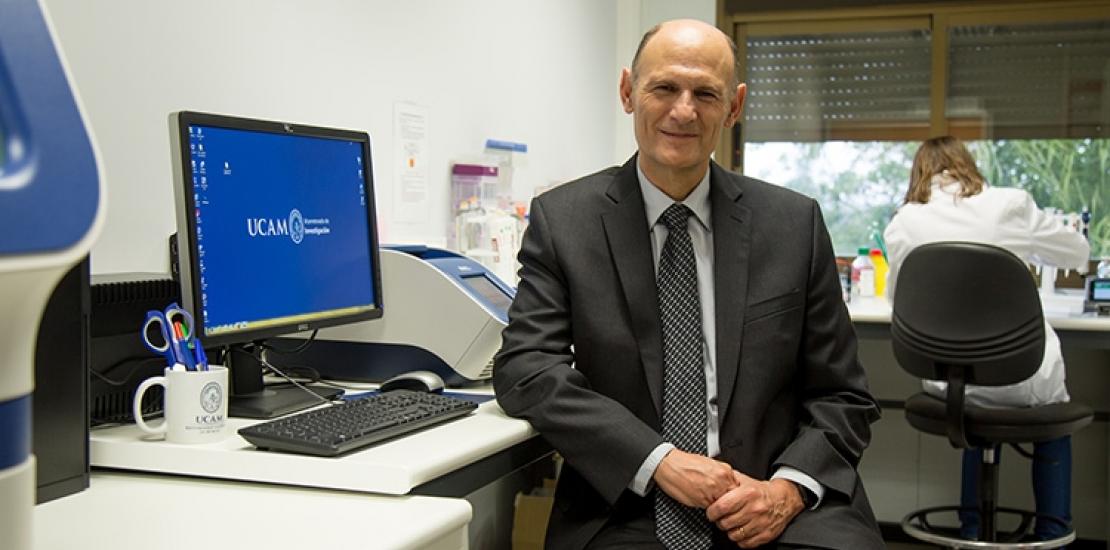Izpisua develops an advanced genome-editing tool to treat rare diseases
The research team led by the Professor of the Gene Expression Laboratory of the Salk Institute, in the US, and Professor of Developmental Biology of the UCAM has observed, after testing the technique (SATI) in mice with progeria (premature ageing), a rejuvenation in various tissues, including skin and spleen, and 45% increase in their lifespan, which would be equivalent to more than a decade in case of humans. The advance has been published by the scientific journal Cell Research.
The team of scientists led by Dr. Juan Carlos Izpisua, professor in the Gene Expression Laboratory of the Salk Institute and Professor of Developmental Biology of the UCAM has developed a new tool of genome editing, SATI (short for ‘intercellular linearized Single homology Arm donor mediated intron-Targeting Integration), aimed at treating various diseases caused by genetic mutations.
The gene-editing tools in living organisms offer a possibility to treat a big number of inherited illnesses. However, many of these tools that exist nowadays are not able to select specific areas of the DNA, and the development of new efficient tools is very complicated, since the tissues of living organisms comprise various types of different cells.
The new genome-editing tool, SATI, developed thanks to the co-financing of the UCAM, allows to edit the mouse’s genome by selecting a wide range of mutations and types of cells, and it could be used to correct various mutations, such as the one that causes Huntington disease and premature ageing syndrome or progeria.
“In this study we have demonstrated that SATI is a very powerful tool for genome editing”, explains Juan Carlos Izpisua, main author of the article. “SATI could be a key element in the development of effective strategies for the correction of various types of genetic mutations, and it opens the way for gene editing in healing a wide range of illnesses”.
The tools for the modification of DNA, especially the CRISPR-Cas9 system, are effective on dividing cells, such as skin and intestine cells. This team led by Dr. Izpisua has already demonstrated before that its gene-editing technology based on CRISPR-Cas9, called HITI, is efficient both on dividing and non-dividing cells. There are certain regions of the DNA, called coding regions, which hold the information to produce proteins; and there are other regions, called non-coding regions, that are the ones that determine the quantity of each protein that must be produced. Such non-coding regions constitute the majority of the DNA (~ 98%) and they regulate many cell functions, including the activation and deactivation of genes, so they could be a very valuable objective for future gene therapies.
“The intention was to create a versatile tool that acts on these non-coding regions of the DNA, which would not affect the specific function of the gene and would allow to select a broad range of mutations and types of cells”, specified Estrella Núñez, Vice-Chancellor for Research of the UCAM and collaborator of Dr. Izpisua. “As a proof of concept, we focus on a mouse model of premature ageing caused by a mutation that is hard to repair by using the gene-editing tools that exist nowadays”.
This new tool, called SATI, is an advance of HITI, which allows to address and cut new areas of the genome, and it functions by inserting a correct copy of the problematic gene in the non-coding region of the DNA prior to the mutation. This new gene is integrated in the genome together with the mutated gene, through one of the DNA repair pathways, thus correcting the adverse effects of the original mutated gene, without taking the risk associated to the complete replacement of the gene.
The researchers have tested the SATI tools on living mice with progeria, an illness caused by a genetic mutation in the LMNA gene. Both humans and mice with progeria show signs of premature ageing, cardiac dysfunction and an extremely short lifespan due to the accumulation of a protein called progerin. Through the use of SATI, a normal copy of the LMNA gene has been inserted in mice with progeria and it has been possible to observe a rejuvenation in various tissues, including skin and spleen, together with an increase of the lifespan of the animal (45% as compared to non-treated mice with progeria). In case of humans, this increase would be equivalent to more than a decade.
Therefore, SATI represents the first tool of in vivo gene correction able to identify non-coding regions of the DNA in various types of tissues.
To access the publication click here




